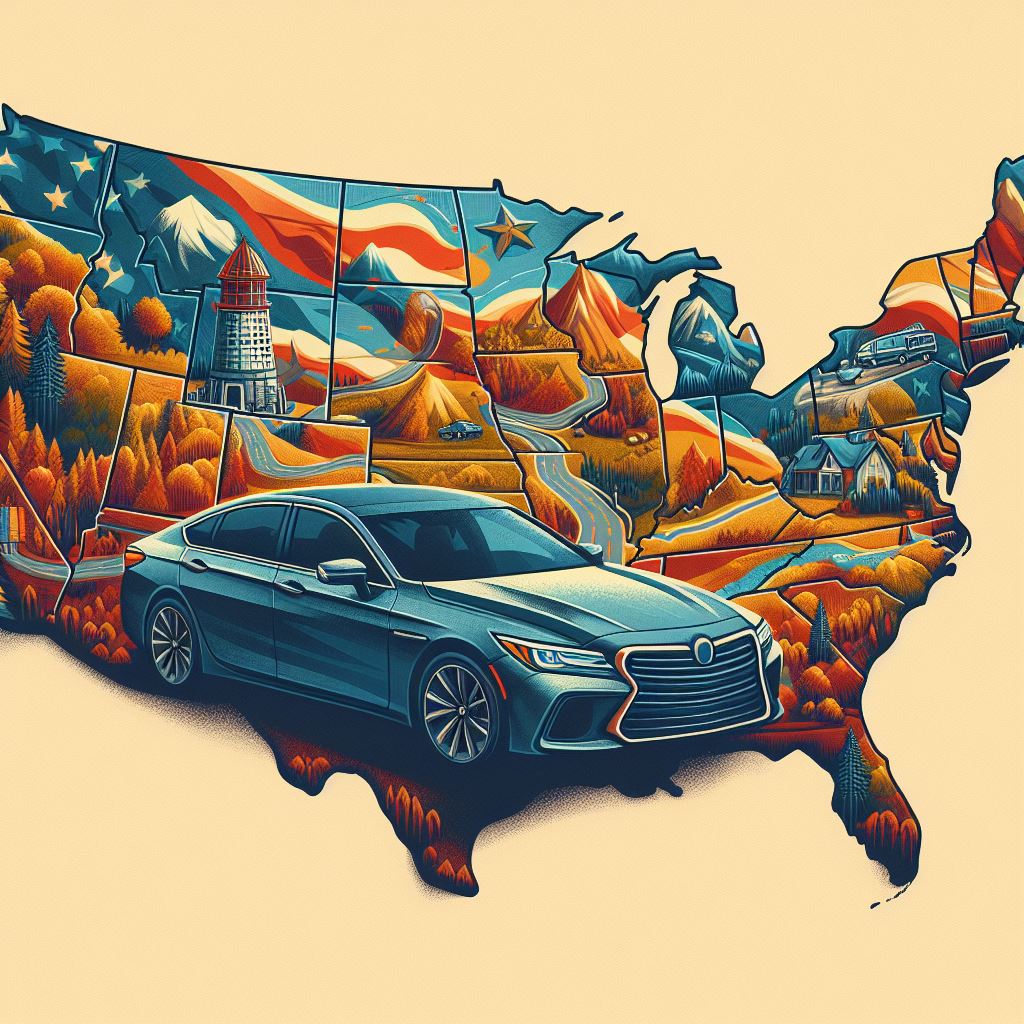
Owning a car has long been associated with freedom in the United States – freedom to travel and explore. However, the cost of insurance can slam on the brakes for low-income individuals and families. In this guide CheapInsurance.com navigates the road to affordable car insurance coverage in all 50 states. We’ll unveil government-sponsored programs, unlock hidden discounts, and reveal clever alternatives like pay-per-mile insurance. Grab your driver’s license, and get ready to find the perfect policy that protects your wallet and your peace of mind!
Key Takeaways:
- Low-income car insurance options exist in all 50 states: While some states offer dedicated government programs, others provide alternative resources like non-profit insurers, pay-per-mile plans, and discounts.
- Meeting eligibility requirements is essential: Each program has specific criteria regarding income, driving record, and residency. Researching these requirements ensures you’re exploring avenues you qualify for.
- Shop around and compare: Don’t settle for the first offer. Comparing quotes from various insurers and programs can unlock significant savings.
- Utilize available resources: State insurance departments, charitable organizations, and comparison websites can be valuable allies in your search for affordable coverage.
- Drive safely and maintain a clean record: This not only keeps you and others safe, but it can also open doors to lower rates and discounts in the future.
Driving with Peace of Mind on a Budget
For many Americans, driving isn’t a luxury, it’s a necessity. Getting to work, school, doctor’s appointments, and caring for family often relies on the freedom of a car. But for low-income drivers, the financial burden of car insurance can become an insurmountable obstacle. That’s where low-income car insurance programs come in, providing a lifeline to responsible drivers who need to stay on the road without breaking the bank.
These programs recognize the vital role cars play in daily life and aim to make insurance accessible to everyone, regardless of income. Qualifying for these programs typically involves meeting basic requirements such as:
Income criteria: Your income must fall below a certain threshold set by the program or state.
Residency: You must be a resident of the state offering the program.
Driving record: You must have a valid driver’s license and maintain a clean driving record in most cases.
Vehicle ownership: You must own an eligible vehicle, often limited to older cars used for personal purposes.
While only a handful of states have government-sponsored low-income car insurance programs, there are other options available nationwide.
Let’s explore the resources available in each state.
States with Government-Sponsored Programs:

California: California Automobile Insurance Assigned Risk Plan (CAAP)
Launched in 1999, CAAP is a state-sponsored program designed to provide eligible low-income drivers with minimum liability insurance at significantly lower rates compared to the traditional market. This vital program recognizes that driving is often a necessity for work, healthcare, and education, and ensures these crucial needs aren’t hampered by the burden of unaffordable insurance.
Qualifications for CAAP:
- Residency: You must be a resident of California.
- Income: Your household income must fall below a certain threshold, typically defined as a percentage of the federal poverty level. For example, in 2023, a single person earning less than $20,420 or a family of four earning less than $41,560 may qualify.
- Driving record: You must have a valid driver’s license and meet specific requirements regarding license suspensions, moving violations, and at-fault accidents.
Benefits of CAAP:
- Discounted rates: CAAP rates are significantly lower than standard insurance premiums, making coverage more affordable for low-income drivers.
- Financial stability: By ensuring drivers have minimum liability insurance, CAAP protects them from potential financial devastation in case of an accident.
- Peace of mind: Knowing you’re covered can provide peace of mind and allow you to focus on other important aspects of your life.
Accessing CAAP:
To find out if you qualify for CAAP and to get started with the application process, you can visit the official website: https://www.insurance.ca.gov/01-consumers/105-type/95-guides/01-auto/lca/
You can also call the CAAP hotline at 1-866-602-8861 for assistance.
Remember: Even if you don’t qualify for CAAP, there are other resources available to help you find affordable car insurance in California. These include:
High-risk insurance pools: These pools offer coverage to drivers who have difficulty finding standard insurance due to factors like poor driving records.
Charitable organizations: Some non-profit organizations provide assistance with car insurance costs for low-income individuals.
Comparison websites: Comparing quotes from multiple insurance companies can help you find the most affordable option, even if you don’t qualify for a specific program.

Hawaii: High-Risk Driver Insurance Program
In the island paradise of Hawaii, where ocean breezes and swaying palm trees paint a picture of serenity, the cost of car insurance can sometimes feel like a tidal wave of expense. For budget-conscious drivers, particularly those categorized as “high-risk” due to past driving infractions, finding affordable auto insurance coverage in Hawaii can seem like conquering a mountain. Thankfully, the Aloha State offers a lifeline: the High-Risk Driver Insurance Program (HDRIP).
Established in 1991, HDRIP was born from a commitment to ensuring all responsible drivers, regardless of past driving history, have access to minimum liability insurance. This invaluable program recognizes that driving is often crucial for accessing jobs, healthcare, and essential services in Hawaii, particularly in geographically isolated areas. By providing a safety net for “high-risk” drivers, HDRIP allows them to participate in society without the anxiety of potential financial ruin in case of an accident.
Understanding HRDIP:
While not specifically designed for low-income individuals, HRDIP serves as a lifeline for drivers who face difficulties obtaining standard insurance due to factors like:
- Poor driving records: This includes moving violations, accidents, and DUI convictions.
- Limited driving history: New drivers or those with gaps in their driving history may face higher premiums or difficulty finding coverage.
- Other risk factors: Age, vehicle type, and credit score can also influence insurance rates.
HRDIP steps in by providing a pool of insurers who are obligated to offer basic liability coverage to eligible drivers. This ensures that everyone has access to the minimum legal requirements, even if they might be considered high-risk by traditional insurance companies.
Qualifying for HDRIP:
- Residency: You must be a resident of Hawaii.
- Driving record: While past driving infractions or license suspensions make you eligible for the program, your record must meet specific criteria, such as the absence of recent DUI convictions or major accidents.
- Insurance history: You must have been denied coverage or offered unaffordable rates by at least two standard insurance companies.
Benefits of HDRIP:
- Guaranteed coverage: Unlike the uncertainty of the traditional market, HDRIP ensures eligible drivers can obtain minimum liability insurance, a mandatory requirement in Hawaii.
- Competitive rates: While typically higher than standard insurance due to the “high-risk” nature, HDRIP rates are significantly lower than what such drivers would face in the traditional market.
- Second chance: HDRIP provides a pathway for improving your driving record and potentially transitioning to standard insurance in the future.
Accessing HDRIP:
Interested drivers can contact any licensed insurance agent in Hawaii to start the application process. You can also find more information on the program’s website: https://cca.hawaii.gov/ins/motor-vehicle-insurance/

Maryland: Maryland Automobile Insurance Fund (MAIF)
While Maryland boasts delectable crabs and charming coastal towns, navigating the state’s car insurance landscape can feel like navigating the Chesapeake Bay during a crab feast – messy and expensive. For low-income residents, this can be especially challenging, potentially clipping their wings and hindering their journey towards financial stability. But fear not, Marylanders! The Maryland Automobile Insurance Fund (MAIF) offers a crucial safety net, helping to keep your financial boat afloat and your Baltimore Ravens soaring high.
Understanding MAIF:
MAIF isn’t just another insurance program; it’s a lifeline for drivers who have been rejected by standard insurance companies due to factors like:
- Poor driving record: Moving violations, accidents, and DUI convictions can make finding affordable coverage difficult.
- Limited driving history: New drivers or those with gaps in their driving history may face higher premiums or difficulty finding coverage.
- Other risk factors: Age, vehicle type, and credit score can also influence insurance rates.
By providing a pool of insurers who are obligated to offer basic liability coverage to eligible drivers, MAIF ensures everyone has access to the minimum legal requirements, giving them peace of mind and protecting themselves and others on the road.
Qualifying for MAIF:
- Residency: You must be a resident of Maryland.
- Driving record: While not a hard requirement, having a poor driving record may make you a prime candidate for MAIF.
- Standard insurance denial: You must have been denied coverage by at least two standard insurance companies in the past 12 months.
Benefits of MAIF:
- Access to coverage: MAIF ensures you can meet the legal requirement for minimum liability insurance, protecting yourself and others on the road.
- Competitive rates: While not necessarily the cheapest option, MAIF rates are significantly lower than those offered to high-risk drivers in the standard market.
- Driving record improvement: Once enrolled in MAIF, you can work on improving your driving record. This can make you eligible for lower rates or even standard insurance in the future.
Accessing MAIF:
Visit the official MAIF website: https://www.mymarylandauto.com/site/ for detailed information and to start the application process. You can also call the MAIF hotline at 1-800-297-6313 for assistance.
Even if your situation doesn’t perfectly fit the criteria, resources and guidance are available through MAIF and other organizations to help you find affordable car insurance in Maryland. By exploring your options and utilizing available programs, you can navigate the Maryland auto insurance landscape with confidence and keep your financial journey on track.

New Jersey: Basic Auto Insurance Policy (BAIP)
In New Jersey, the Garden State renowned for its bustling boardwalks and scenic landscapes, the high cost of living can create a roadblock, especially for car insurance. Low-income residents may find themselves at a crossroads, struggling to afford the minimum coverage required by law. But New Jersey offers a helping hand in the form of the Basic Auto Insurance Policy (BAIP) – a lifeline for navigating the financial maze.
Understanding BAIP:
While other states in this article offer programs specifically designed for low-income individuals, New Jersey’s BAIP is available to anyone who meets the eligibility criteria. This makes it a valuable option for a broader range of drivers facing affordability challenges. BAIP provides basic liability insurance at significantly lower rates than standard policies, ensuring drivers meet the legal requirements without breaking the bank.
Qualifying for BAIP:
- Residency: You must be a resident of New Jersey.
- Driving record: You must have a valid driver’s license and meet specific requirements regarding license suspensions, moving violations, and at-fault accidents.
- Age: Drivers under 25 or over 65 may need to meet additional requirements.
- Vehicle: Your vehicle must be registered in New Jersey and meet specific criteria.
Benefits of BAIP:
- Discounted rates: BAIP rates are substantially lower than standard insurance premiums, making coverage more accessible for budget-conscious drivers.
- Compliance with the law: By providing minimum liability insurance, BAIP protects you from legal penalties and financial burden in case of an accident.
- Potential for future savings: Maintaining a clean driving record while on BAIP could make you eligible for lower rates or even standard insurance in the future.
Accessing BAIP:
To learn more about BAIP and start the application process, you can visit the New Jersey Department of Banking and Insurance website: https://www.nj.gov/dobi/division_consumers/insurance/saip.htm.
You can also call the Department of Banking and Insurance at 1-800-446-7467 for assistance.
Remember: Even if you don’t qualify for BAIP, there are other resources to help you find affordable car insurance in New Jersey. These include:
- Special Automobile Insurance Policy (SAIP): This program offers limited medical coverage for drivers who are eligible for Medicaid.
- High-risk insurance pools: These pools offer coverage to drivers who have difficulty finding standard insurance due to factors like poor driving records.
- Charitable organizations: Some non-profit organizations provide assistance with car insurance costs for low-income individuals.
- Comparison websites: Comparing quotes from multiple insurance companies can help you find the most affordable option, even if you don’t qualify for a specific program.

Navigating the Road without a Government Lifeline: Options for Affordable Car Insurance in States Without Low-Income Programs
While not every state offers government-sponsored low income car insurance programs, there are still avenues to navigate the road towards affordable coverage even if you’re facing financial constraints. Here are some helpful options for states without dedicated programs:
1. Digging for Diamonds: Exploring Alternative Insurance Providers:
- Non-profit Insurance Companies: Consider organizations like GEICO Gecko® Advantage Insurance or Progressive’s Essential Auto, designed for budget-conscious drivers. They often offer lower rates and flexible payment options compared to traditional companies.
- High-Risk Insurance Pools: If your driving record isn’t squeaky clean, don’t despair. These state-regulated pools provide coverage to drivers who might otherwise struggle to find insurance due to various factors. While rates may be higher than standard coverage, they’re typically lower than what you might find otherwise.
- Credit Unions and Membership Organizations: Some credit unions and membership organizations offer discounted rates on car insurance to their members. Explore if you belong to any organizations that could provide this perk.
2. Tailoring Your Coverage to Fit Your Needs:
- Pay-per-Mile Insurance: Companies like Metromile or State Farm Drive Safe & Save charge premiums based on how many miles you actually drive. If you’re a low-mileage driver, this can be a significant cost-saver.
- Liability-Only Coverage: Consider if opting for minimum liability coverage, which meets state legal requirements but doesn’t cover your own vehicle damage, could be a viable option while you build your financial stability.
- Review Policy Add-Ons: Carefully assess if all the additional coverages in your current policy are essential. Opting out of non-critical add-ons, like rental car reimbursement, can potentially lower your premium.
3. Harnessing the Power of Discounts:
- Good Driver Discounts: Maintaining a clean driving record can unlock significant discounts on your car insurance. Drive defensively, avoid traffic violations, and complete defensive driving courses to reap the rewards.
- Low Mileage Discounts: Some insurers offer discounts for low-mileage drivers. Track your mileage and present it to your insurance company to see if you qualify for lower rates.
- Other Potential Discounts: Many insurers offer discounts for factors like being a senior citizen, student, military personnel, or having multiple policies with them. Explore all available discounts and stack them for maximum savings.
4. Be an Informed Consumer:
- Comparison Shopping: Don’t settle for the first quote you receive. Compare rates from multiple insurers online or contact insurance agents to find the best deal. Remember, the cheapest option isn’t always the best – ensure the coverage meets your needs and financial capabilities.
- Negotiate Your Rate: Don’t be afraid to negotiate your premium with your current insurer. Inform them of any discounts you qualify for or competitor quotes you’ve received, and see if they can offer a better price.
- Regularly Review Your Policy: As your life and driving habits evolve, so should your car insurance. Review your policy annually and adjust coverage levels or switch companies if you find a better deal elsewhere.
Remember, even though government-sponsored programs might not be available in your state, you still have options to navigate the road to affordable car insurance. By exploring alternative providers, tailoring coverage to your needs, harnessing discounts, and being an informed consumer, you can find a policy that fits your budget and keeps you protected on the journey ahead.
Additional Resources:
- National Association of Insurance Commissioners (NAIC): https://content.naic.org/
- Insurance Information Institute (III): https://www.iii.org/
- Your State Insurance Department: Each state has its own insurance department, which can provide information about available programs and regulations.
- Learn more about car insurance in all fifty states
Related Reading:
The Secret to Finding Affordable Car Insurance for Young Drivers
How to Lower Your Car Insurance Rates Overnight
Car Insurance Cost Comparison: ICE, Hybrid, EV
How to Avoid Scams When Shopping for Car Insurance
The 5 Most Common Car Insurance Mistakes
First Look: The 10 Best Cheap Car Insurance Companies of 2024
Find The Best Cheap Car Insurance Quotes Today
How Often Should You Get a Car Insurance Quote
Top 10 Tips for Getting Cheap Insurance


